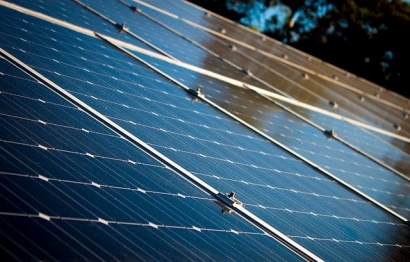
The R&D funding round will build on ARENA’s previous R&D investment into solar PV and will seek to support projects that align with ARENA’s Solar 30 30 30 target of 30% module efficiency and 30 cents per installed watt at utility scale by 2030.
ARENA invites applications that can materially reduce the levelised cost of solar PV by 2030 across two streams:
ARENA currently expects to allocate up to $20 million in total funding to each of the two streams.
Ultra low cost solar was recently added as a priority technology in the Australian Government’s latest Low Emissions Technology Statement (LETS), which set a stretch goal of $15 per megawatt hour, roughly a third of today’s cost.
Ultra low cost solar will be a key input to scaling up production of low cost green hydrogen, in support of the LETS hydrogen goal of “H2 under $2”, as well as key to unlocking other decarbonisation pathways for heavy industry including low emission materials such as green steel and aluminium.
As part of ARENA’s new Investment Plan and in support of ultra low cost solar, ARENA has set an ambitious target of ‘Solar 30 30 30’, to improve solar cell efficiency to 30 per cent and reduce the total cost of construction of utility scale solar farms to 30 cents per watt by 2030.
Since 2012, ARENA through its R&D Programs has committed close to $105 million in grant funding to over 70 projects. In addition to this, ARENA has also supported the Australian Centre for Advanced Photovoltaics (ACAP) with $84 million of funding over 10 years.
ARENA CEO Darren Miller said the pioneering work of Australian solar researchers will be key to driving cost reductions and improving solar cell efficiency.
“Australia’s solar researchers have been leading the world for decades. Thirty years ago, UNSW researchers invented the PERC silicon solar cell, technology which today is the foundation of more than 80% of the world’s solar panels.
“That great work continues through ACAP, our universities and CSIRO as well as clean energy startups. Just a few months ago, SunDrive – a startup founded by former UNSW students and now based in Sydney – created the world’s most efficient solar cell.
“This $40 million R&D funding round will support Australia’s solar researchers and industry to get behind the target of Solar 30 30 30 and drive the innovation that will deliver ultra low cost solar,” he said.
“Ultra low cost solar will be a vital component in helping Australia move towards a lower cost, largely renewable electricity system and achieve the goal of net zero emissions by 2050.”
Expressions of Interest for the Ultra Low Cost Solar R&D Funding Round will open in February 2022 with applications due by 5pm AEST Monday 11 April 2022.

